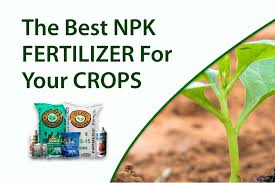
Nov . 27, 2024 08:16 Back to list
Understanding the Composition and Applications of Diammonium Phosphate in Agriculture and Industry
Understanding the Formula and Uses of Diammonium Phosphate
Diammonium phosphate (DAP) is an important chemical compound often utilized in agriculture as a fertilizer. The formula for diammonium phosphate is (NH4)2HPO4, which indicates that it consists of two ammonium ions (NH4+) combined with one hydrogen phosphate ion (HPO4^2-). This compound plays a vital role in enhancing soil fertility and crop yields, making it a staple in the agricultural industry.
Chemical Composition
Diammonium phosphate is a salt formed by the reaction of ammonia (NH3) with phosphoric acid (H3PO4). Its chemical structure reveals that it contains nitrogen, phosphorus, and hydrogen, which are essential nutrients for plants. The two ammonium groups provide readily available nitrogen, while the hydrogen phosphate group offers phosphorus, which is crucial for root development, flowering, and overall plant growth. The presence of these nutrients makes DAP particularly effective in providing the essential elements that crops require.
Agricultural Applications
DAP is primarily used as a fertilizer because of its high nutrient content, specifically its nitrogen and phosphorus levels. It has an N-P-K (nitrogen-phosphorus-potassium) ratio of 18-46-0, indicating that it contains 18% nitrogen and 46% phosphorus. This ratio makes it one of the most concentrated phosphorus fertilizers available. Farmers often apply DAP at the time of planting to ensure that young plants have immediate access to these crucial nutrients, promoting healthy growth from the very beginning.
In addition to its fertilizing properties, DAP is also valued for its solubility in water, making it easily absorbable by plants. This solubility allows for quick nutrient uptake, which is particularly beneficial during the crucial early stages of plant development. Moreover, DAP enhances soil quality by improving its pH balance, making it less acidic and more conducive to plant growth.
diammonium phosphate formula

Environmental Considerations
While DAP is highly effective as a fertilizer, its use requires careful management to minimize environmental impacts. Excessive application can lead to nutrient runoff, which may contribute to water pollution and eutrophication in nearby water bodies. Eutrophication can cause harmful algal blooms that deplete oxygen in water, harming aquatic life. Thus, it is essential for farmers and agricultural professionals to apply DAP in appropriate amounts and in line with soil nutrient testing to prevent these adverse effects.
Alternative Uses
Beyond agriculture, diammonium phosphate has several industrial applications. It is used in the production of non-flammable materials, such as fire retardants. Additionally, DAP is employed in the food industry as a yeast nutrient in baking and brewing processes. Its ability to support yeast growth makes it useful in fermentation, where it contributes to the overall quality of the final product.
Conclusion
Diammonium phosphate, with its chemical formula (NH4)2HPO4, is a crucial compound in agriculture and various industries. Its rich nutrient profile makes it a favored choice for enhancing soil fertility and crop productivity. However, responsible usage is necessary to mitigate environmental concerns associated with its application. As agricultural practices continue to evolve, the importance of DAP in sustainable farming and industrial processes remains significant, highlighting the need for ongoing research and innovation in the field of agricultural chemistry. By understanding the properties and applications of diammonium phosphate, farmers and researchers can better leverage this compound to achieve optimal plant growth while protecting the environment.
-
Premium 8 12 16 Fertilizer – High-Efficiency Compound & Granular NPK Supplier
NewsJun.10,2025
-
High Quality Agricultural Grade NPK Fertilizer Manufacturer & Supplier Reliable Factory Price
NewsJun.10,2025
-
Organic Fertilizer for Corn Boost Yield Sustainably
NewsJun.10,2025
-
Organic Fertilizer for New Plants Natural Growth Boost & Eco Nutrients
NewsJun.10,2025
-
Optimized Hydroponic NPK Fertilizer – Fast Growth & Nutrients
NewsJun.09,2025
-
Top-Rated NPK Fertilizer for Fruit Trees - Boost Growth & Yield
NewsJun.09,2025
